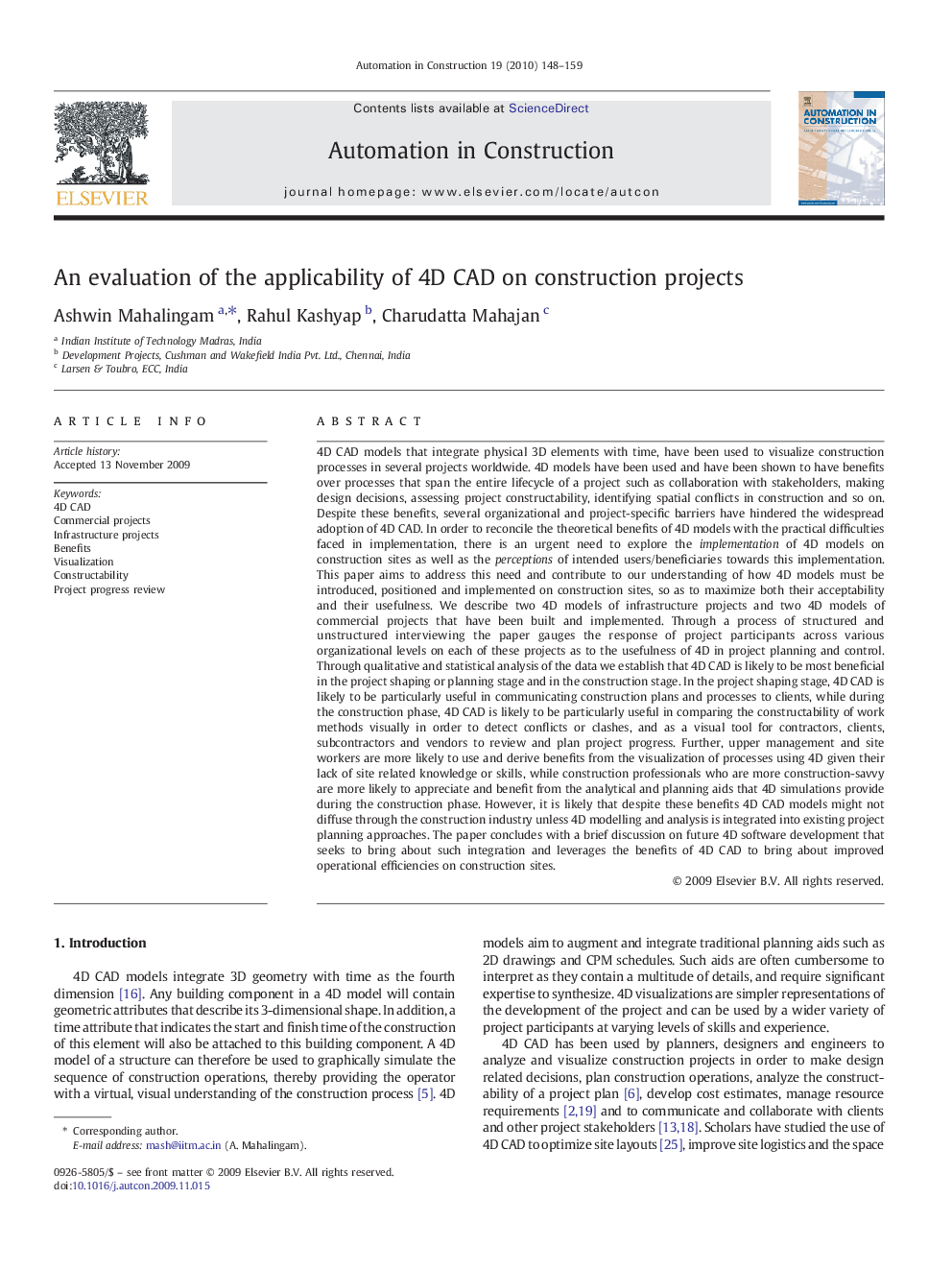| کد مقاله | کد نشریه | سال انتشار | مقاله انگلیسی | نسخه تمام متن |
|---|---|---|---|---|
| 247197 | 502410 | 2010 | 12 صفحه PDF | دانلود رایگان |

4D CAD models that integrate physical 3D elements with time, have been used to visualize construction processes in several projects worldwide. 4D models have been used and have been shown to have benefits over processes that span the entire lifecycle of a project such as collaboration with stakeholders, making design decisions, assessing project constructability, identifying spatial conflicts in construction and so on. Despite these benefits, several organizational and project-specific barriers have hindered the widespread adoption of 4D CAD. In order to reconcile the theoretical benefits of 4D models with the practical difficulties faced in implementation, there is an urgent need to explore the implementation of 4D models on construction sites as well as the perceptions of intended users/beneficiaries towards this implementation. This paper aims to address this need and contribute to our understanding of how 4D models must be introduced, positioned and implemented on construction sites, so as to maximize both their acceptability and their usefulness. We describe two 4D models of infrastructure projects and two 4D models of commercial projects that have been built and implemented. Through a process of structured and unstructured interviewing the paper gauges the response of project participants across various organizational levels on each of these projects as to the usefulness of 4D in project planning and control. Through qualitative and statistical analysis of the data we establish that 4D CAD is likely to be most beneficial in the project shaping or planning stage and in the construction stage. In the project shaping stage, 4D CAD is likely to be particularly useful in communicating construction plans and processes to clients, while during the construction phase, 4D CAD is likely to be particularly useful in comparing the constructability of work methods visually in order to detect conflicts or clashes, and as a visual tool for contractors, clients, subcontractors and vendors to review and plan project progress. Further, upper management and site workers are more likely to use and derive benefits from the visualization of processes using 4D given their lack of site related knowledge or skills, while construction professionals who are more construction-savvy are more likely to appreciate and benefit from the analytical and planning aids that 4D simulations provide during the construction phase. However, it is likely that despite these benefits 4D CAD models might not diffuse through the construction industry unless 4D modelling and analysis is integrated into existing project planning approaches. The paper concludes with a brief discussion on future 4D software development that seeks to bring about such integration and leverages the benefits of 4D CAD to bring about improved operational efficiencies on construction sites.
Journal: Automation in Construction - Volume 19, Issue 2, March 2010, Pages 148–159